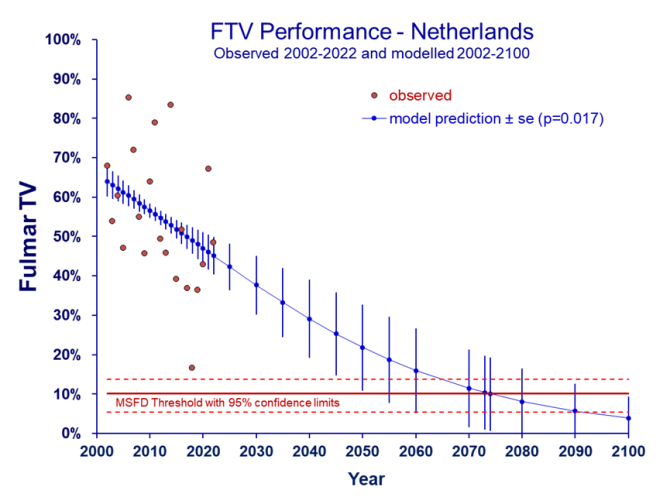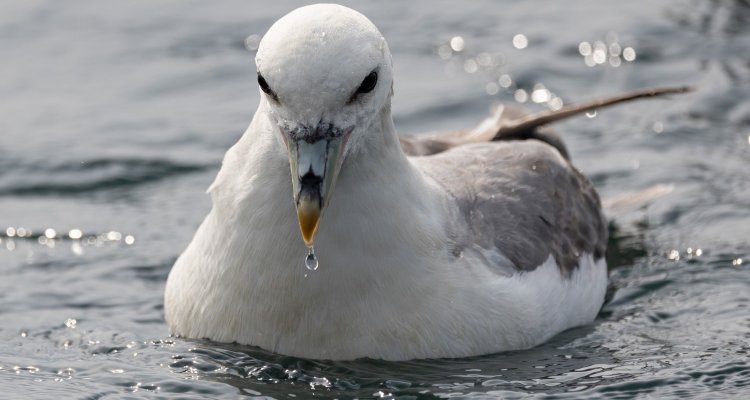2022 Report on Plastic Pollution in Northern Fulmars Published
In 2022, volunteers collected 66 suitable dead fulmars along the Dutch coast. The data from these birds is used for the long-term study of plastic ingestion by fulmars. The now-published report by Wageningen Marine Research indicates that 94% of these birds had plastic in their stomachs, an average of 19 pieces or 0.29 grams per bird. The EU aims, that the number of birds with more than 0.1 grams of plastic should be reduced to below 10%. However, in the past five years, 50% of the fulmars exceeded this threshold.
To avoid confusion due to annual variations, data on ingested plastics are reported over periods of the most recent five years. For the years 2018-2022, 212 fulmars were available. On average over this period, the birds had 24 pieces of plastics in their stomachs, with an average plastic weight of 0.26 grams per bird. After a period of gradual decline, plastic mass has increased again in the recent five-year periods. The reason for this is unclear. Over the standard 10-year test period for trend calculations, no significant trend was observed despite the recent increase. However, looking at the full extent of the European fulmar project since 2002, the decrease in plastic mass remains significant.

The EU aims for a cleaner North Sea, less than 10% of fulmars have more than 0.1 grams of plastic in their stomachs. Currently, half of all fulmars exceed this threshold. The calculation predicts that the threshold could be achieved by 2074.
Look into the future
The new data are also used to predict the attainment of the EU threshold. Again, all data from 2002 onwards were used for this analysis. The current prediction indicates that by 2074, only 10% of the fulmars will have more than 0.1 grams of plastic in their stomachs. This calculation assumes that continuous measures are taken to further reduce the influx of plastic litter into the sea. If the effort slows down, the target year will be delayed.
Thanks to all volunteers
This important research is only possible thanks to the efforts of many volunteers who search the coasts for dead, beached fulmars. We would therefore like to express our great thanks to these volunteers. To link the data of found fulmars back to the finders, Wageningen Marine Research has been publishing accompanying reports illustrating the stomach contents of each bird for several years. This supplementary report offers a good overview of the wide variety of plastics ingested by fulmars. Together with the current fulmar data report, the Finder’s Report for fulmars found in 2022 is now publicly available.

